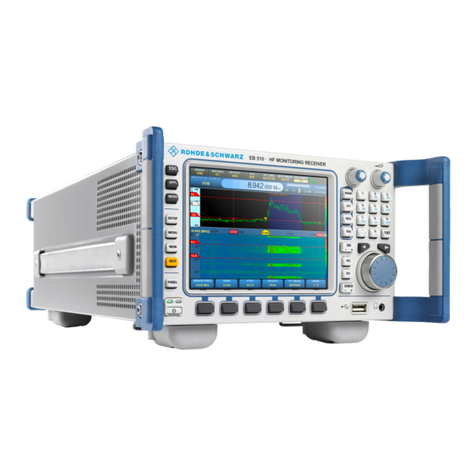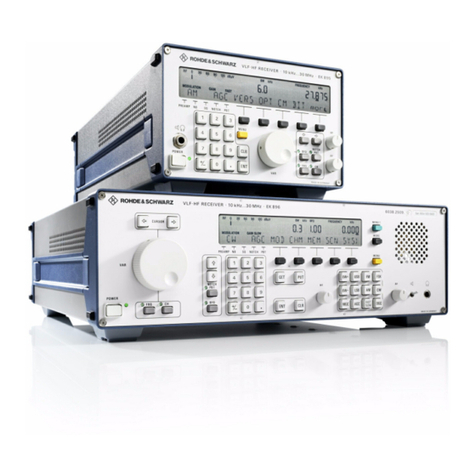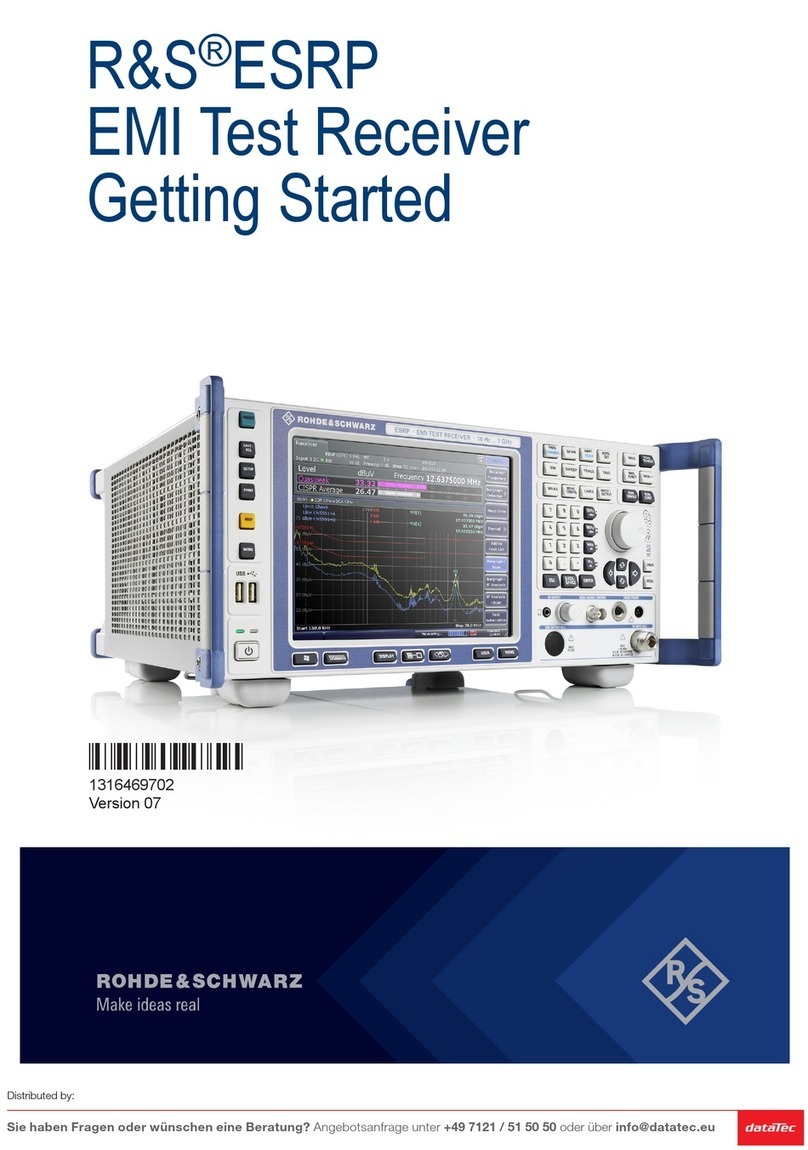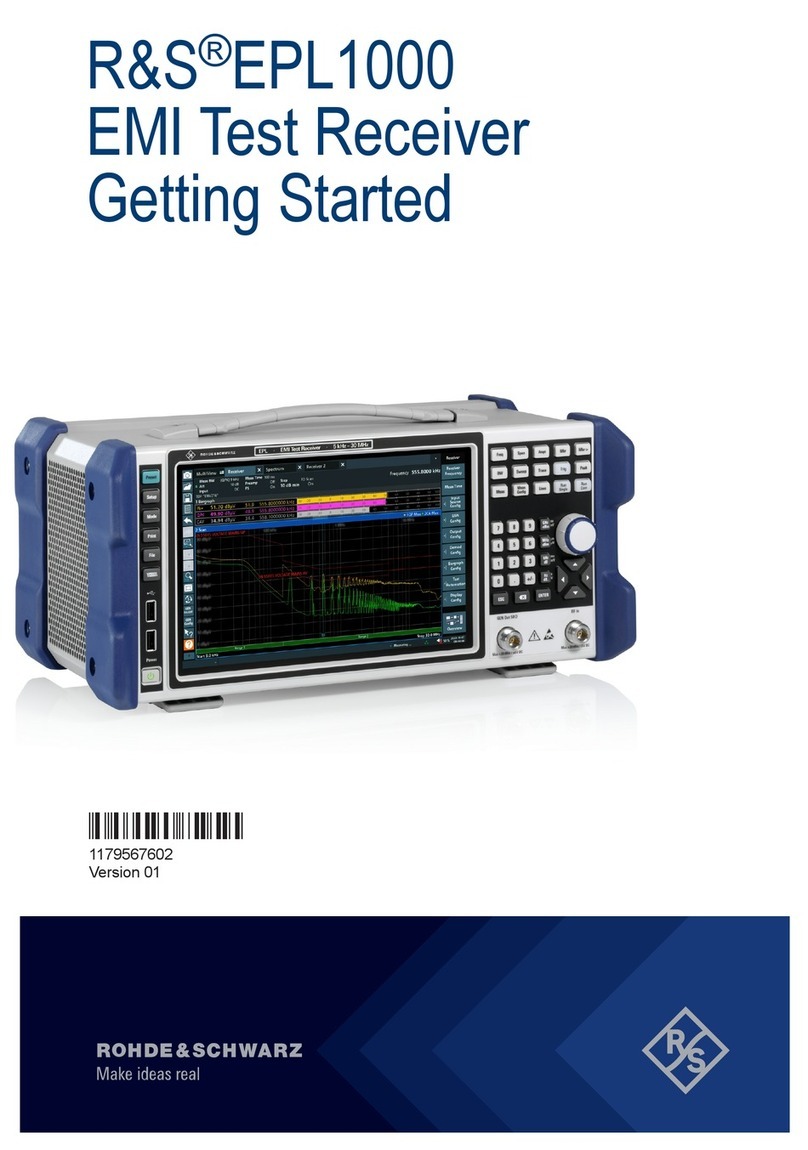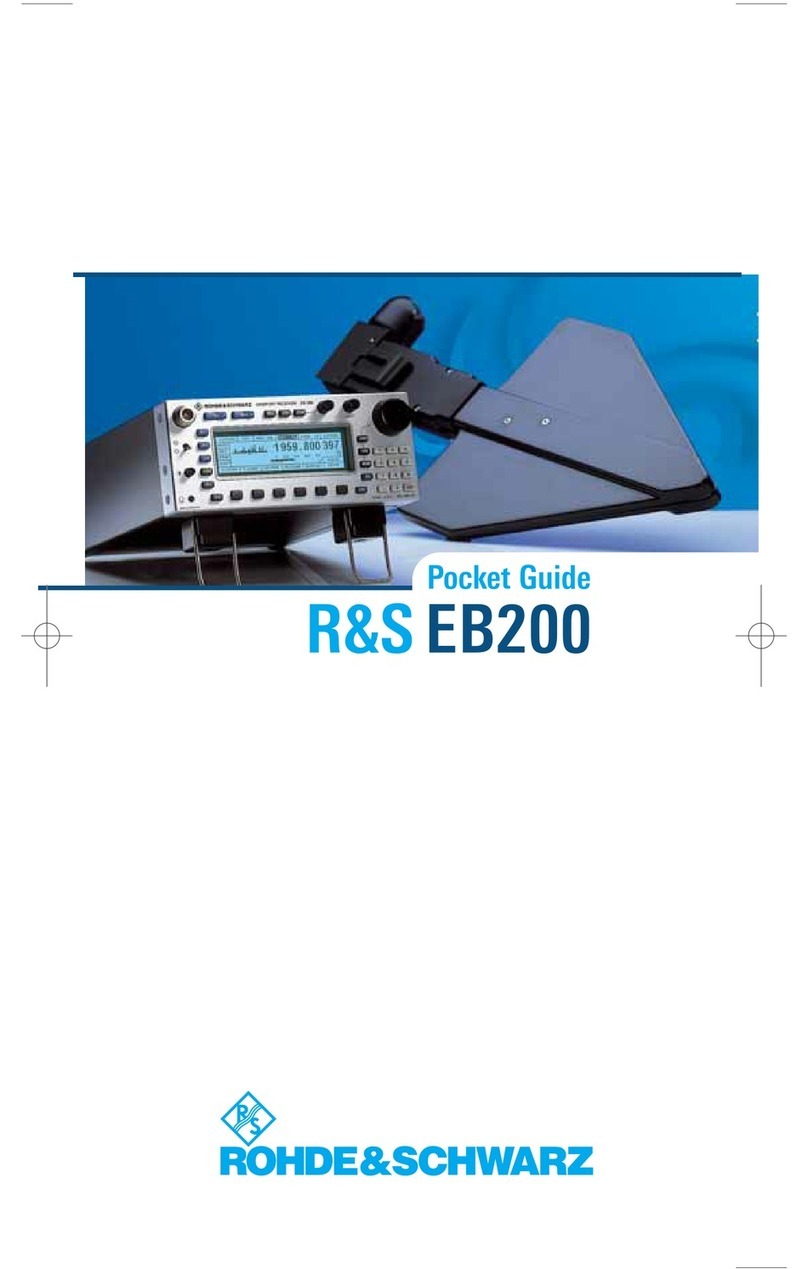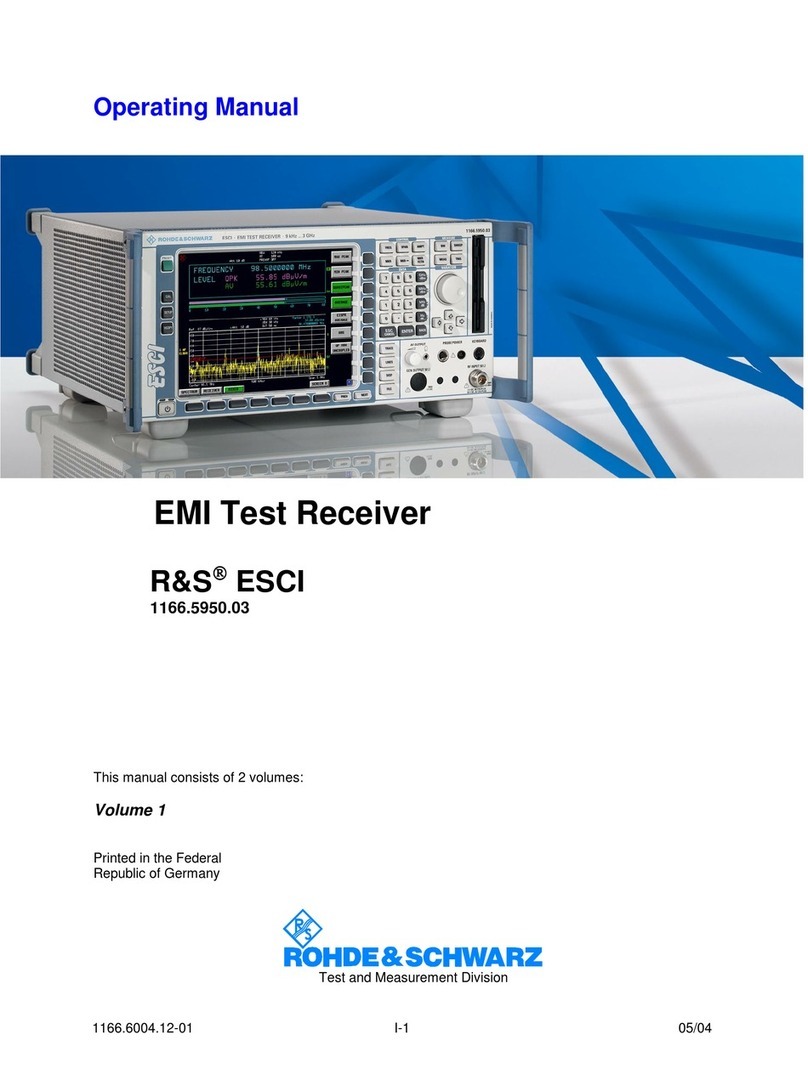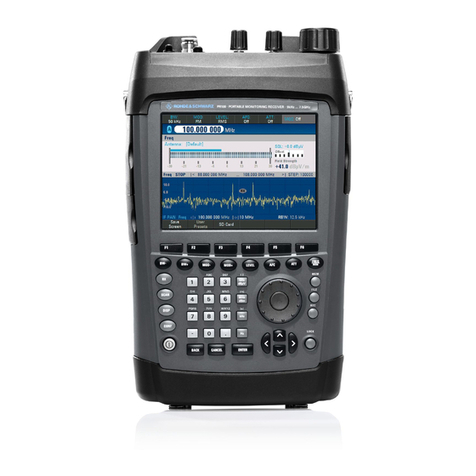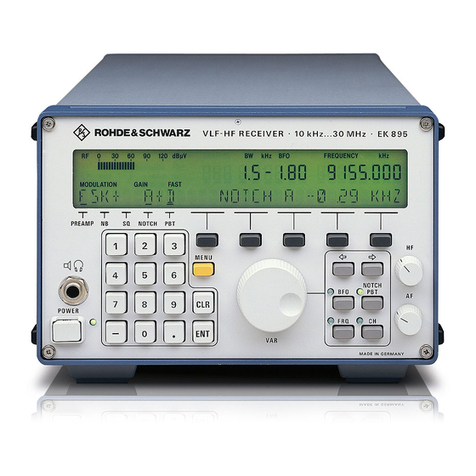
Safety and Regulatory Information
R&S®ESW
9Getting Started 1328.4922.02 ─ 09
uct is moved without lifting it. The foldable feet are designed to carry the weight of
the product, but not an extra load.
If stacking is possible, keep in mind that a stack of products can fall over and
cause injury.
If you mount products in a rack, ensure that the rack has sufficient load capacity
and stability. Observe the specifications of the rack manufacturer. Always install
the products from the bottom shelf to the top shelf so that the rack stands
securely. Secure the product so that it cannot fall off the rack.
Connecting to power
The product is an overvoltage category II product. Connect the product to a fixed
installation used to supply energy-consuming equipment such as household
appliances and similar loads. Keep in mind that electrically powered products
have risks, such as electric shock, fire, personal injury or even death.
Take the following measures for your safety:
●Before switching on the product, ensure that the voltage and frequency indica-
ted on the product match the available power source. If the power adapter
does not adjust automatically, set the correct value and check the rating of the
fuse.
●If a product has an exchangeable fuse, its type and characteristics are indica-
ted next to the fuse holder. Before changing the fuse, switch off the instrument
and disconnect it from the power source. How to change the fuse is described
in the product documentation.
●Only use the power cable delivered with the product. It complies with country-
specific safety requirements. Only insert the plug into an outlet with protective
conductor terminal.
●Only use intact cables and route them carefully so that they cannot be dam-
aged. Check the power cables regularly to ensure that they are undamaged.
Also ensure that nobody can trip over loose cables.
●If the product needs an external power supply, use the power supply that is
delivered with the product or that is recommended in the product documenta-
tion or a power supply that conforms to the country-specific regulations.
●Only connect the product to a power source with a fuse protection of maxi-
mum 20 A.
●Ensure that you can disconnect the product from the power source at any
time. Pull the power plug to disconnect the product. The power plug must be
easily accessible. If the product is integrated into a system that does not meet
Safety Instructions
